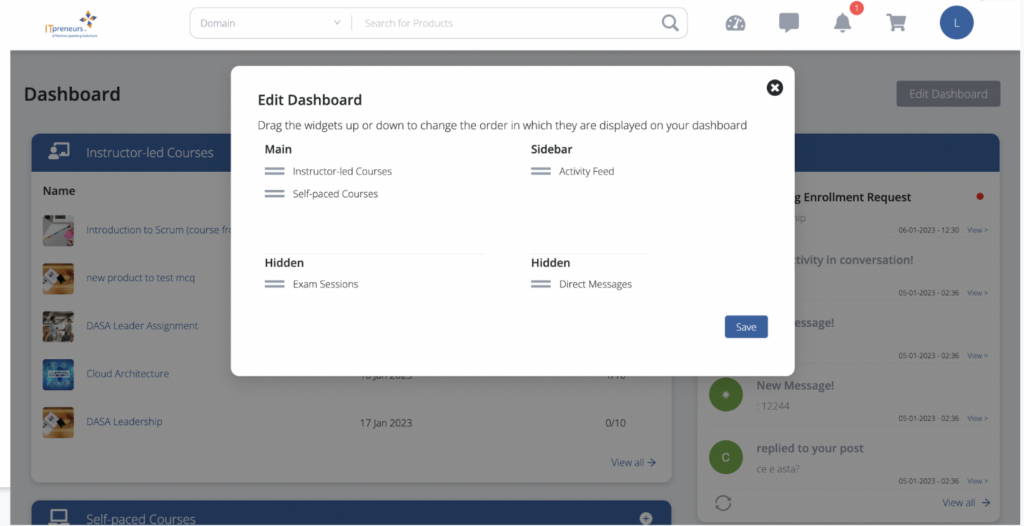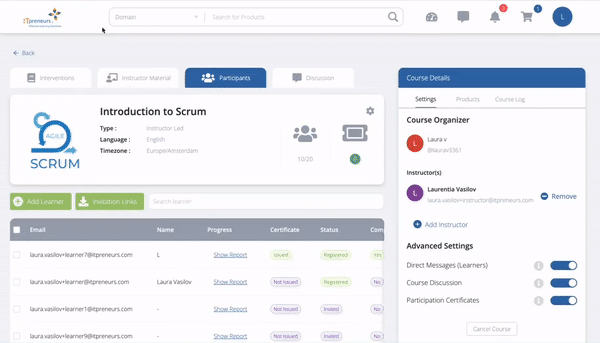At the beginning of the lockdown season, I attended a couple of webinars on how to deal with the current situation where we have to move our activities (training, consulting, mentoring, coaching, facilitating, etc.) from the face-to-face environment to a virtual environment.
In case of training we could argue there are three types of delivery:
- Blended training
- eLearning
- Virtual instructor-led training
Each type has specific characteristics, but all of them must deal with three topics:
- Processes
- Materials
- Tools
Step by step, we all learn how to deliver virtual training. So, what is my experience after two months? Glad you asked. Let’s find out!
Processes
I’ll start with the easiest one: the processes. This topic depends on the maturity of the organization and its people. There are two possibilities:
If processes worked before, they will work during the lockdown as well, as long as you are willing to alter the tactics a little. If operations weren’t smooth offline, they will certainly not suddenly be smooth in a virtual environment. One chaotic style likely prompts another chaotic style. Usually, this means a manual process with inevitable human errors. To be able to change it, you need somebody who can see things from a fresh perspective and does it systematically in an agile way (week by week). It might be tough, but at least organizations recognize that there is something that needs to be fixed. On the other hand organizations on a higher level of maturity could use this time to improve and automate. I believe that those organizations gain a notable competitive advantage for the future, and when we do eventually reach a post-COVID era, they will surely be recognized as victors.
Materials
The second topic is linked to learning interventions or training materials. Again there are more or less two options:
The first one (and the poor one) is that organizations create training material with the sole objective of having a minimum product that can pass 3rd party accreditation. In this case, the content is undoubtedly insufficient to deliver virtual instructor-led training. Those organizations have to design from scratch, during what is likely already the most challenging period in their history.
The second (and preferable) one is that organizations prepare comprehensive material with a multitude of notes for the trainers, or even trainer guides, additional content for students like posters, pre-reading, post-reading, links, reading lists, etc. In this case, the trainers were able to use the same material without additional cost. Of course, in both cases, the trainers had to change the style of delivery. But let’s revisit that later.
Tools
The third topic to be considered is tools. In this area everything is new.
In the traditional (or should we now say old?) way to deliver classroom training, you only need a computer, projector, flipchart, and/or whiteboard. That’s it. But when you want to deliver virtual training, you should employ many more tools (not just video conferencing tools), and in many cases, these tools are entirely new to the trainers. The trainers then have to learn how to use the tools, not only from the user perspective but largely from the trainer’s perspective. And it is a different experience altogether. It is related to the personality of the trainer, the materials, the exercises, and of course, technical aspects (bandwidth, cameras, size of the monitors, etc.).
So, let’s go back to the style and related technologies. Both must respect the limitations imposed by virtual delivery. The fundamental limitation is that you are not in the same room as your students. So, students do not see your body language (and you do not see theirs) and things easily get static. To be able to improve, you should break the training into small pieces, let’s say 10-15 minutes. At the end of each section, you need to change something. It would, for example, help if you changed presenting slides into having a discussion, or an exercise, or group reviews, or to a different technology with the different delivery methods (such as a whiteboard or collaborative app). Training should not be mind-numbing. In this area, I have been using the set of options that follow:
- Slides – this is still important to have and use them from time to time.
- Breakout session/room – most videoconferencing tools can split the audience into smaller groups and allow them to discuss/prepare something that will be presented to other groups later on.
- Drawing – suddenly there is something dynamic. You start to draw the content on the screen so that learners are required to observe what you are doing. I have been using my iPad with the Penultimate app. Usually, I have some picture skeletons I complete during the delivery. Of course, there are many other tools and options.
- Mindmap – this is an excellent method for traditional classroom delivery and mind mapping software can help you during virtual classroom as well. In many cases, the software allows collaboratively working on one map with multiple learners. It can be used for presenting and for an exercise as well.
- Kanban board – people should know where you are on the timeline/content of the training. Kanban with three columns (ToDo, Doing, Done) are very useful for most of the deliveries. I have been using scrumblr.ca and I add (on the left side) an additional column “Parking lot “. People can put off-topics, expectations, questions into this column any time and during the training, you can go through those additional notes to make sure everything is covered, or you can recommend another source of information/training.
- Trello (deserves its own mention) – is a great tool to manage your tasks and projects. But when you create a board for the training and invite people, they can use it to do value stream mapping, story mapping, process specification, planning, etc.
- YouTube – an excellent source of 1-10 minute videos you can use to support your training. It can be funny commercials related to the topic or what somebody else said about the subject or even an explanation of some terms related to the lesson.
- Mural – I like to use it because it can simulate the conference rooms where the walls have been painted with smart paint. So you can draw all over them. Mural.ca is a tool that can be used to represent the fancy boardroom walls in the virtual world. You have a practically endless canvas to draw on. But you should be careful to make sure you and the learners do not get lost — a canvas can quickly grow in scale causing it to be too big to be useful. So make sure to prepare your concept in advance.
- Azure DevOps – a set of tools that can combine in a certain way according to the many options we have already mentioned.
- G Suite – this is a very well-known platform for sharing information in the form of text documents, tables, slides, via Google Docs, Google Slides and Google Sheets. I have been using it for some exercises, and mainly for the “training log”. Before the training starts, I create the document I share with all participants. In the document, I enter the structure of the training. When there is an exercise, learners are asked to also input their results into this document. The same applies to all images the student or I draw in any tool. In case there are other sources of information, we can place it here (link, images, books, etc.). At the end of the training, you have a complete overview of what was discussed during the session. Because every training is different, the training log is unique. Such a log is unique to you and not something that learners can get somewhere else.
Final Considerations
This sums up what I do to create an enjoyable experience for the participants. All of the above is in your control. However, don’t forget that each participant has its own circumstances. It can be a different type of device (with no camera), a screen with a different resolution, varying levels of internet connection, and multiple software or tools they like to use. The most significant difference is the diverse dynamics in the learners home office (shared with their partner, kids, pets, etc.). These external factors are for you to discover when you start with the training, and you need to be able to adjust what you have prepared. So preparation on your side is essential, and the key is that you must be willing to change it according to specific conditions and limitations on the part of the participants. You can distribute some prerequisites to the participants, but in the end, it is the learner who decides.
About the author

After 25 years of being an employee, I have decided to start my own business. As a consultant, coach, mentor, lecturer and project manager I share what I have learned by doing during those years, including DevOps (DASA Competence model), ITIL (ITIL Expert, Approved ITIL trainer), CobiT & IT Governance (Certificate in CobiT, Acredited COBIT 5 trainer), Project & Programme Management (IPMA – B, PRINCE2 Practitioner, Approved PRINCE2 trainer), Process Management & Improvement (BPMN, UML, Lean, SixSigma – Black belt), Change Management (ChangeFirst), Self management (GTD, ZTD, MBTI), Project Portfolio Management (PMI), Strategic Management (Strategy maps, BSC, Hoshin Kanri), IT management & System Integration, and Mind Mapping.
Related Courseware
Sorry, we couldn't find any posts. Please try a different search.



